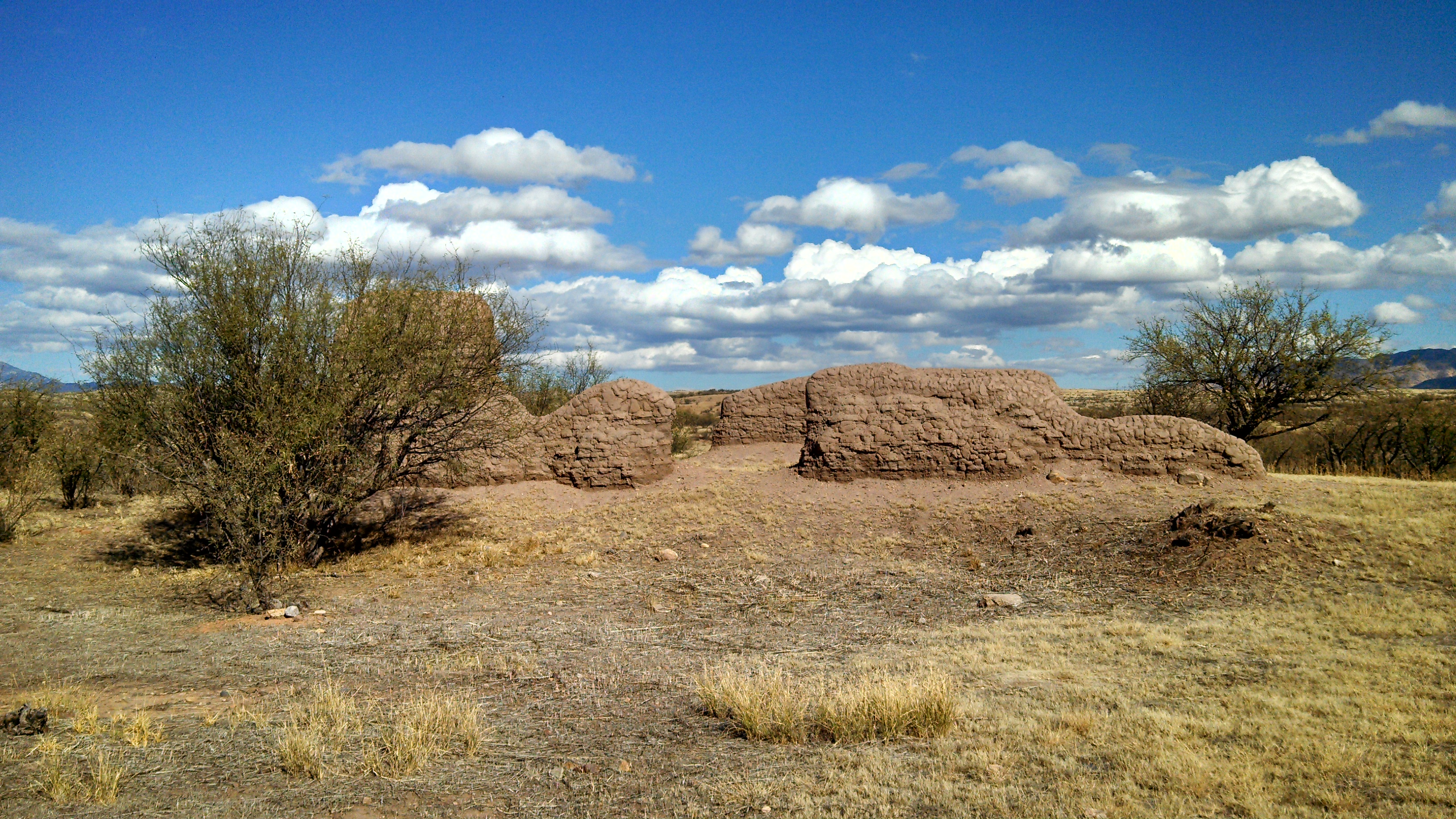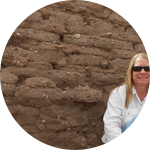About This Project
Guevavi was a major focus of missionization efforts among the Sobaipuri-O'odham. We think we have identified the 1751 Jesuit mission among six adobe structures that surround the recognized NPS mission. I will date each with adobe wall samples using the luminescence technique. This will inform on which of these adobe structures date to (a) the Kino period (1691-1711), (b) 1751, (c) which are Franciscan, or (d) later mining/ranching features.Ask the Scientists
Join The DiscussionWhat is the context of this research?
For years historians suggested that the standing ruins are the remains of the mission originally built in 1751. Yet, few Jesuit missions in this portion of the Pimería Alta are so large. It is unlikely that the Franciscans would have used the same church as the Jesuits. The artifacts found with this new building are consistent with this alternate structure being from the Jesuit period. It lacks artifacts from later in the era as well. The north-south orientation also suggests it is a church, as this is consistent with standard European mission building practices.
More background information can be found in papers at the following web sites: https://independent.academia.edu/DeniSeymour and http://www.seymourharlan.com/.
What is the significance of this project?
Now we have the opportunity to examine other aspects of received knowledge about the Sobaipuri-O’odham, the Spanish Colonial Mission period, and the development of Guevavi Mission itself. Yet it is critically important to get the place right when drawing inferences so that we may have an accurate assessment of history. This project will allow us to place each adobe structure in the correct temporal context, which means we will be able to pinpoint which structures go with which part of the historic record. We will know if Kino built two structures, a house and a church, or whether one building served both purposes.
What are the goals of the project?
The funds will be used to run 2 optically stimulated luminescence dates on the walls of the adobe structures. These cost $400 each.
The University of Washington Luminescence Laboratory will be used, as I have used them before with good results. I have previously run adobe wall samples with this lab and the results have contributed tremendously to our understanding of the construction sequence and development of Santa Cruz de Terrenate presidio. The sample material will be sent in as blind samples so that the results are not biased in any way by preconceptions.
Budget
Contributions to this project are tax deductible. Jornada Research Institute, a non-profit, will receive the funds and pay for the dates on my behalf, making all contributions tax deductible. http://jornadaresearchinstitute.com/?page_id=23
Funding will be used to date two luminescence samples. If more than the base amount of funding is received I will run additional dating samples and pay for postage. Samples will be sent to the University of Washington Luminescence Laboratory. Samples cost $400 each.
Luminescence dating includes thermoluminescence (TL) and optically stimulated luminescence (OSL). In brief, TL documents the last time a material was heated to a certain temperature. This can be when a pot, brick, rock, or stone flake was last fired, either during manufacture, when it was heated on a cooking fire, or if it was burned in a conflagration that destroyed a house. In contrast, OSL dates the last time the quartz, feldspar, or similar particles were last exposed to light. This should represent when a sample was manufactured (or deposited if sand in a natural stratum) and can be a useful dating technique for pot sherds, adobes, fired bricks, and even canal sediments.
I intend to date these adobe walls using the OSL technique. I have used this before with good success and so expect that these efforts will provide definitive results.
Samples will consist of a small piece of adobe from the wall (either brick or mortar) that will inform on when the adobe walls were made, that is, when the sand particles were last exposed to light. This would have occurred when the mortar or adobe was mixed.
You can read more about the success of dating Sobaipuri-O'odham sites using this technique in the following paper:
2011 Dating the Sobaípuri: A Case Study in Chronology Building and Archaeological Interpretation: Old Pueblo Archaeology Bulletin 67:1-13.
This is available at the following web page:
https://independent.academia.edu/DeniSeymour
Meet the Team
Team Bio
Deni has been researching the Spanish Colonial period and the Sobaipuri-O'odham, especially related to the Jesuit period, for almost 30 years. Her work is undertaken in coordination with the descendant groups of Sobaipuri-O'odham. She carries out her research entirely with volunteers. She has identified dozens of Kino-period Sobaipuri village sites on the San Pedro, Santa Cruz, Babocomari rivers, and Sonoita Creek.She conducted her first work at Guevavi Mission in 1990, and has worked intermittently on this mission site since then. In the mid to late 2000s she conducted excavations in one of the Sobaipuri-O'odham areas at Guevavi and excavated the structure now thought to be the one Kino referred to as his "neat little house and church." The currently proposed dating project clarifies many long-standing questions about the site and its development using a tried-and-true dating technique not available when work first began there.
For more on her background you can visit her LinkedIn.
Deni Seymour
Dr. Deni Seymour is a leading regional authority on protohistoric and historic Native American and Spanish colonial archaeology and ethnohistory. For nearly 30 years she has studied the ancestral Apache, Sobaipuri-O’odham, and lesser-known mobile groups (Jano, Jocome, Manso, Suma, and Jumano). She has excavated two Spanish-period presidios (Santa Cruz de Terrenate and Tubac) and several indigenous sites of the period, works with indigenous groups in reconnecting with their heritage, tackles Coronado and Niza expedition archaeology, and is rewriting the history of the pre-Spanish and colonial period southern Southwest. She has published extensively on these groups and this period, with more than 75 publications in referred journals, edited volumes, and popular venues, and has served as guest editor for journals. She has also authored three books with a fourth under review:
(1) Where the Earth and Sky are Sewn Together: Sobaípuri-O’odham Contexts of Contact and Colonialism.
(2) From the Land of Ever Winter to the American Southwest: Athapaskan Migrations, Mobility, and Ethnogenesis;
(3) A Fateful Day in 1698: Archaeological Insights into the Remarkable Sobaipuri-O'odham Victory over the Apache and their Allies.
These and many of her other publications are visible on https://independent.academia.edu/DeniSeymour
She received her doctorate and master’s degrees in Anthropology from the University of Arizona in 1990 and her Bachelor's degrees with honors in both Anthropology and Environmental Studies from the University of California, Santa Cruz in 1980. She has taught, was employed by a number of state and federal agencies, and has worked for a number of cultural resource management firms, including one she founded and directed. Now she is a full-time research archaeologist affiliated with two academic institutions and the nonprofit research group Jornada Research Institute and she serves on the boards of two non-profit organizations.
Additional Information

The standing adobe ruins in the southern district of Tumacácori National Historic Park are billed as the 1751 Jesuit mission of Guevavi. But current research suggests that this may be a more recent structure. (Photo by Fred Edson)

If you go to my academia.edu page you will find the following paper on this project.
2013 The Sobaipuri-O’odham Presence at Guevavi Mission. Arizona Archaeological Council Newsletter 37(4):7-15.
https://independent.academia.edu/DeniSeymour/Paper...

Here's a link to a couple of papers on luminescence dating:
http://faculty.ksu.edu.sa/archaeology/publications...
and https://www.uow.edu.au/content/groups/public/@web/...
Project Backers
- 18Backers
- 128%Funded
- $1,025Total Donations
- $56.94Average Donation
